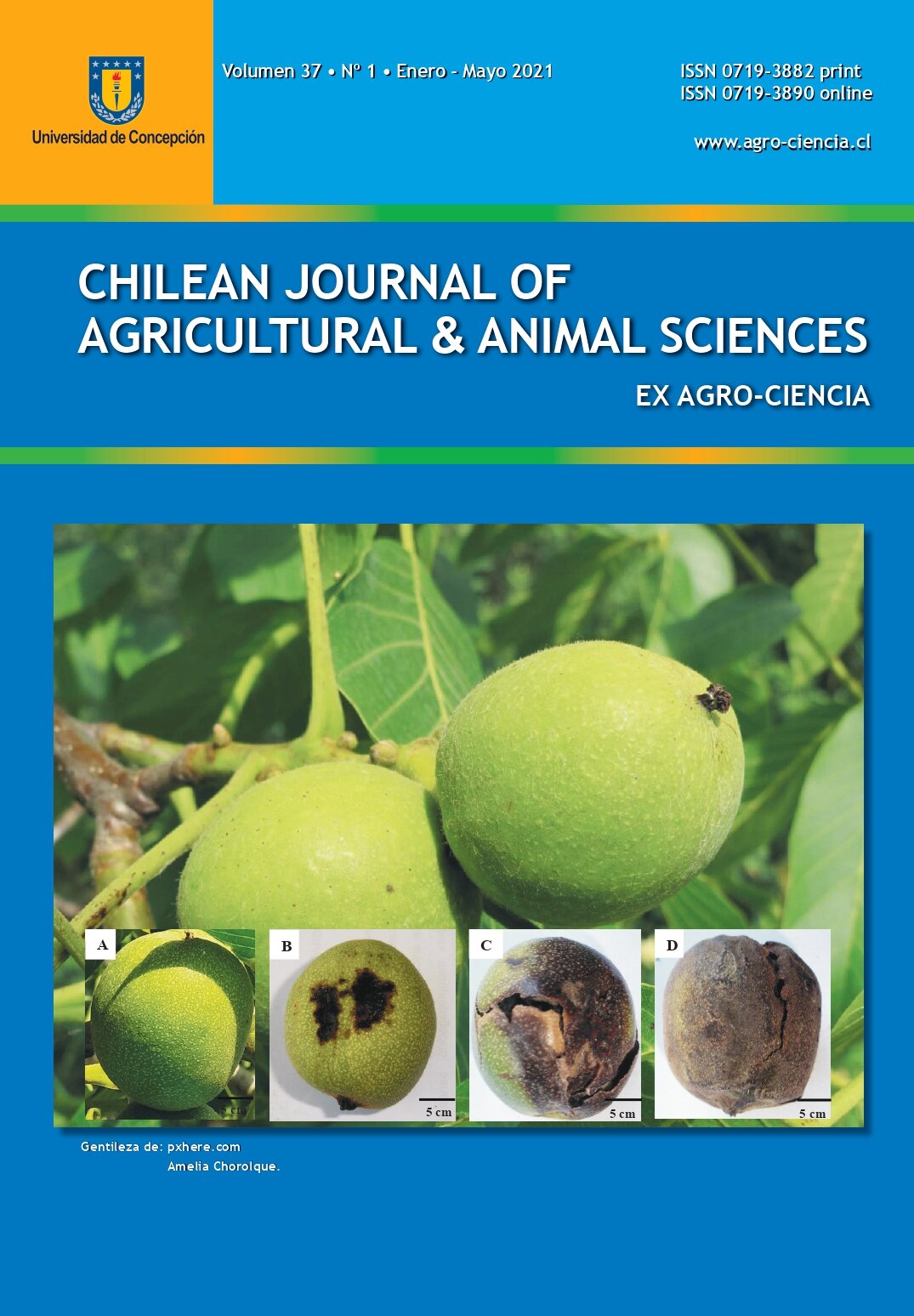EFECTO DE LA ÉPOCA DE APLICACIÓN DE SULFOXAFLOR Y SPIROTETRAMATO EN EL CONTROL DE ESCAMA DE SAN JOSÉ (Diaspidiotus perniciosus Comstock) EN MANZANAS
Luis Sazo1*, Carlos Merino2, Hugo Sepúlveda1, and Mayerly Prieto1
RESUMEN
Diaspidiotus perniciosus is a pest that requires chemical control in an annual basis, whose presence in orchards has increased in the last few seasons. Sulfoxaflor (7.2 g of ai hL-1) and spirotetramat (10 g of ai hL-1) (ai: active ingredient) were applied against first generation nymphs of D. perniciosus (Comstock) at 75, 150 and 228 day degrees (DD), and Chlorpyrifos (60 g of ai hL-1) at 228 DD starting at the biofix (first male capture), in severely infested apple trees located in central Chile, during the 2012-2013 season. The untreated control trees were sprayed with water. Application was performed using handgun with a sprayer equipped with membrane pump delivering 40 L per minute at 250 psi and a water volume of 3500 L per hectare. Evaluation was performed in laboratory on December 20 of 2012, at the end of first D. perniciosus generation nymphs movement, counting the number of nymphs fixed by lineal meter of new twigs collected from infested areas in the tree. Results were subjected to ANOVA and Duncan multiple range test. It was concluded that under the high D. perniciosus pressure present in the trial, all treatments significantly reduced (P ≤ 0.05) the number of nymphs fixed in twigs compared to the untreated trees. However, treatment with spirotetramat applied at 228 DD provided only a partial control of D. perniciosus, being statistically different from all other treatments.
Key words: day degrees, insecticides, effectiveness, fixing, scales
1 Universidad de Chile, Facultad de Ciencias Agronómicas, Casilla 1004, Santiago, Chile.
2 Dow AgroSciences, Chile. Américo Vespucio 100, Piso 6, Santiago, Chile.
*Autor para correspondencia E-mail:


